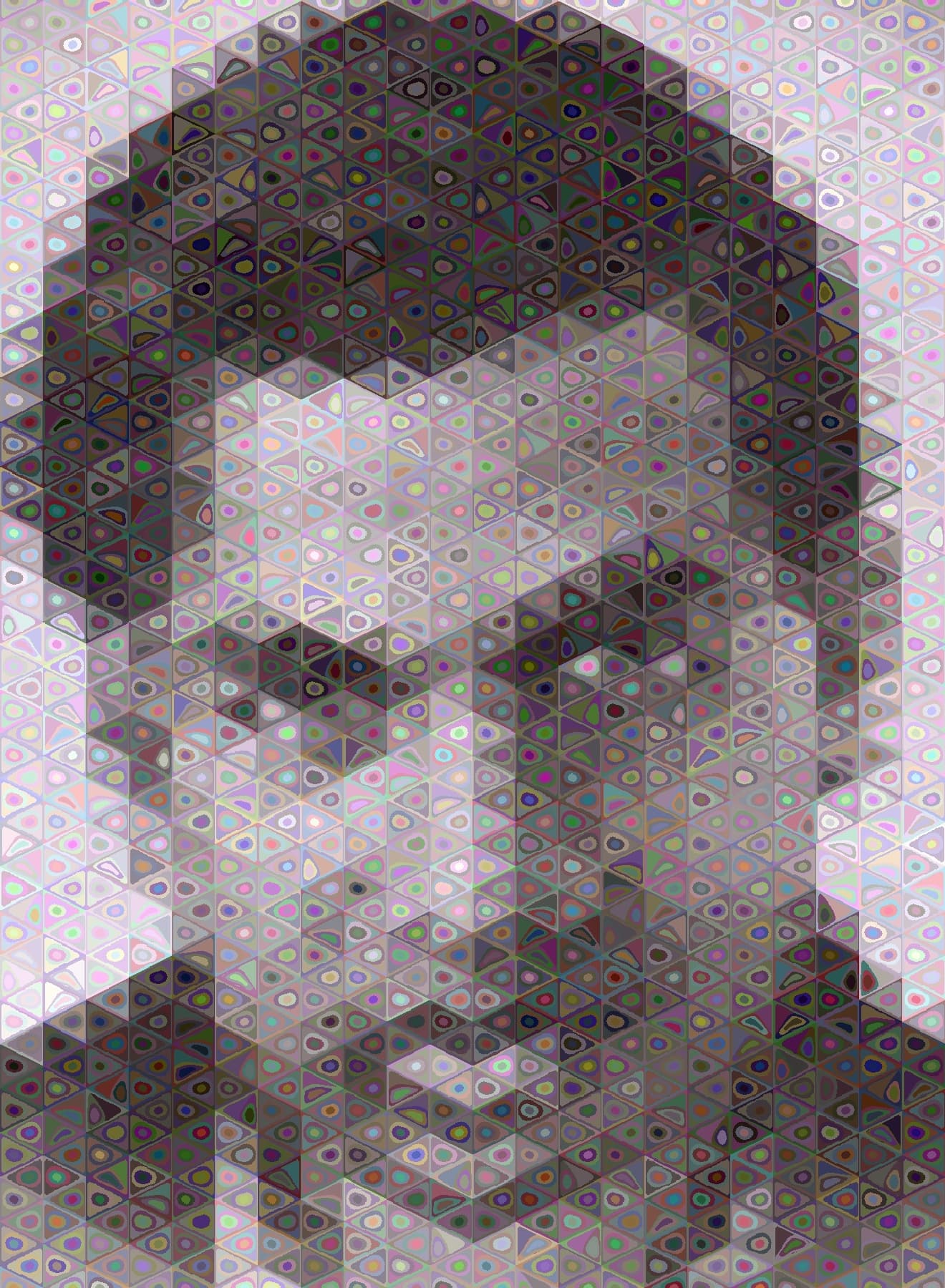2011 Joint Mathematics Meetings
Edward Aboufadel, Clara Madsen, and Sarah Boyenger
Artists
Edward Aboufadel, Clara Madsen, and Sarah Boyenger
Professor of Mathematics (Aboufadel), Graduate Students in Mathematics (Madsen, Boyenger)
Grand Valley State University (Aboufadel), University of Oregon (Madsen), Florida State University (Boyenger)
Allendale, Michigan (Aboufadel); Eugene, Oregon (Madsen); Tallahassee, Florida (Boyenger)
Statement
Chuck Close is an American painter and photographer who is known for his portraits that are a mosaic of blocks called "marks". These portraits have a strange duality -- the faces appear three-dimensional and clear from far away, but flat and unfocused at closer distances. We developed an algorithm to apply to digital images in order to create digital portraits in the style of Chuck Close. A tiling is placed over the initial image (in this example, the tiles or "marks" are triangles), and within each tile, an analysis is done with wavelet filters to determine the shapes in the tile. A separate analysis is done to choose colors within the triangles. For this work, we have created a portrait of Ramanujan, the famous Indian mathematician.
Artworks

Ramanujan, in the style of Chuck Close, using wavelets
16" x 20"
Digital print
2009